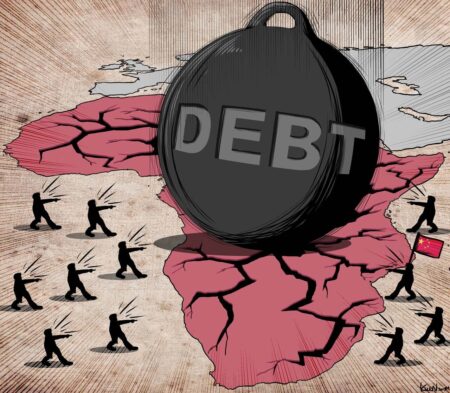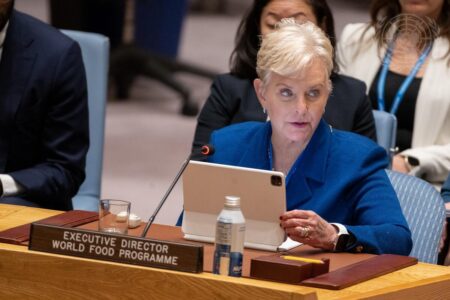- In 2023, Africa’s average young unemployment rate will be 12 per cent.
- It is improbable that youth unemployment rates will return to pre-pandemic levels in Africa’s low-income nations.
- Lack of employment has compelled African youth to immigrate to affluent nations for job opportunities.
Africa’s youth unemployment is one of the many “poly-crises” destabilising many countries and impeding economic recovery following recent disruptions and challenges. According to the just-released International Labor Organization’s (ILO) annual Monitor of the World of Work study, low-income African nations are unlikely to return to pre-pandemic levels of unemployment this year.
Africa’s job market deficit
Experts predict the global unemployment rate will drop to 5.3 per cent in 2023 from 191 million in 2018. However, the ILO predicts that low-income countries will still lag in employment numbers.
The situation is more serious, given that by 2050, a quarter of the world’s working population will reside in Africa. In Sub-Saharan Africa, the unemployment rate stands at 6.3 per cent. Overall, African countries have a pronounced disparity between the supply and demand of jobs.
African countries have lost access to sufficient employment opportunities for the growing population due to a “poly-crisis” of inflationary pressures, currency depreciation, high debt levels, and rising living costs.
The ILO report has shown that “mutually reinforcing crises” have widened the employment gap globally, particularly in the continent’s low- and middle-income nations. In addition to denting labour markets, it has changed the nature of the labour market.
Solving Africa’s youth unemployment for economic recovery
“The findings of this report are a stark reminder of growing global inequalities. The correlation between debt distress and the jobs gap rate points to the critical importance of international financial support for debt-distressed countries in promoting economic and job recovery,” ILO Director-General Gilbert F. Houngbo said.
She calls for a concerted multinational effort known as the “Global Coalition for Social Justice” to create jobs in underdeveloped countries.
Furthermore, according to the analysis, low-income developing nations in debt distress will have a far greater jobs gap in 2023—25.7 per cent as opposed to 11 per cent in nations with lower debt distress risks. This translates to only 11 per cent in middle-income countries and 8.2 per cent in high-income nations.
The gender factor in Africa’s youth unemployment
In addition, there is a gender gap in female unemployment in Africa, with the gap for women in debt-stressed countries being particularly significant, at 31 per cent. Additionally, the anticipated female unemployment rate in 2022 was 9 per cent compared to 7.4 per cent for men.
Technology development has been viewed as both a benefit and a scourge for the workforce. On the one hand, it has led to job prospects, but on the other, it has led to labour automation. As an illustration, the continuing controversy at the tea fields in Kericho, Kenya, where thousands of workers have met this fate, has sparked violent demonstrations.
Another “Arab Spring” might very easily be sparked by the high unemployment rates, which have been made worse by the rise in the cost of living, much as in 2011, when a wave of protests broke out in response to dire economic conditions, with youth unemployment playing a major role.
Read also: Africa Set to Become a New El Dorado for Rare Earths Production
Economies grappling with unemployment protests
Unemployment demonstrations rocked the continent in the first quarter of the year. Joblessness saw the youth in South Africa, Nigeria, Kenya, Tunisia, and Senegal take to the streets.
Moreover, the lack of employment opportunities has forced many of Africa’s youth to immigrate to affluent nations. Consequently, this has significantly contributed to the so-called “Japa phenomenon,” which is the enormous flight of Nigerians from their country to seek opportunities elsewhere.
Similarly, youth unemployment has compelled residents of Libya, Algeria, Tunisia, Ghana, and Egypt to travel illegally over the Sahara desert or by boat across the Mediterranean and the Red Sea in pursuit of greener pastures in the nations of the European Union.
Smugglers preying on jobless youths
Thousands of young lives have been lost at sea due to the capsize of numerous boats because they are frequently overloaded, and many have fallen prey to the heartless hands of migrant smugglers. In addition, hunger and diseases have taken the lives of others; thankfully, some have reached Europe and have been arrested or sent back to their home countries.

Photo/Money 101
Due to the widespread despair of youth unemployment, young unemployed people have joined terrorist organizations like Boko Haram and Al Shabaab, which hastens violent extremism. In light of this, a recent UNDP survey shows that about 25 per cent of all recruits mentioned a lack of employment possibilities as their main objection.
Additionally, 40 per cent of those surveyed stated that they “were in urgent need of livelihoods at the time of recruitment.” The level of unemployment as a major factor in recruiting is highlighted in the paper titled “Journey to Extremism in Africa: Pathways to Recruitment and Disengagement.” The study gathered conclusions from 2,200 interviews across eight nations, including Burkina Faso, Cameroon, Chad, Mali, Niger, Nigeria, Somalia, and Sudan.
Read also: 2021 World Youth Skills Day: Rethinking Africa’s Youth Unemployment Crisis
Africa’s youth unemployment outlook
In 2023, Africa’s average young unemployment rate will be around 12 per cent. South Africa’s unemployment rate for people under 34 is 50 per cent. The nation has one of the highest unemployment rates in Africa and the world despite being the most industrialized economy in Africa and a member of the G20. Unemployment increased from 32.7 per cent in the last quarter of 2022 to 32.9 per cent in the first three months of 2023.
South Africa is especially concerned with a youth unemployment rate of 46.5 per cent. Over half of the 40.6 million people in the country between the ages of 15 and 64 and are employable are in the 15 to 34 age group. 42.4 per cent of the population was still categorized as unemployed and was “discouraged from seeking work.” Similarly, the number of unemployed increased from 7.753 million in the final three months of 2022 to 7.933 million from January to March.
Power crisis fueling joblessness South Africa
In addition, the country has long been plagued by load shedding, energy shortages, and high unemployment rates, all of which have sparked street protests. Due to the power outages, which can last up to 10 hours daily for residents, businesses have been battling to stay open. As a result, this, along with strict labour rules that have prevented businesses from recruiting workers, and slow economic growth, has worsened the unemployment crisis.
Nigeria is another economic powerhouse dealing with youth unemployment. Nigeria’s unemployment rate is predicted to increase to 40.6 per cent in 2023 from 37.7 per cent in 2022, according to the International Global Economic Outlook report by KPMG, a global audit and tax consultancy organization.
The research also says the country is having trouble absorbing the 4-5 million new workers who enter the Nigerian labour market yearly due to the economic slump. The effects of the Naira Redesign Policy, low industrialisation, limited private sector investment, and political transition have exacerbated unemployment.
Read also: Insulating African Economies from the Global Polycrisis
Unemployment in Egypt, Tunisia
According to the country’s statistics agency, the unemployment rate in Egypt was 7.1 per cent from January to March of this year, down 0.1 per cent from the prior quarter. According to the IMF World Economic Outlook, Morocco’s unemployment rate will hover around 10.7 per cent throughout 2023, somewhat less than the 11.8 per cent it reached at the end of 2022.
In addition, according to data from Tunisia’s National Institute of Statistics (INS), the nation’s unemployment rate rose to 16.1 per cent in the first quarter of 2023 from 15.2 per cent in the previous quarter.
According to Bloomberg, Namibia and Nigeria recently had the highest unemployment rates globally. Eswatini and Djibouti are also highly ranked on the list, coming in at 25 and 28 per cent, respectively. In Uganda, there are also over 1.2 million graduates without jobs. Every year, an estimated 400,000 young people from Uganda enter the labour force and compete for about 52,000 official positions. However, Niger and Benin had Africa’s lowest unemployment rates.
Lack of foreign investment is one of the main causes of unemployment because of racial and political conflicts, corruption, and instability, among other factors that deter investors.
SMEs’ role in solving Africa’s youth unemployment
Small-and-medium size firms (SMEs) have sprung out across Africa due to the continent’s job market, contributing significantly to local economies and accounting for 38 per cent of GDP.
SMEs, up to 90 per cent of all enterprises in sub-Saharan Africa, are the foundation of African economies. They generally produce employment opportunities, income relevant to young people, and wealth building, which helps reduce poverty.

[Photo/Volunteer Int]
Read also: Hustler Fund Set to Fuel Growth of Kenyan SACCOS in 2023
The International Finance Corporation announced in April 2023 the construction of an investment risk-sharing facility for the Bank of Africa Group (BOA) to assist economic activity and job creation in 10 nations throughout sub-Saharan Africa as a reaction to the unemployment issue.
Financing of SMEs in Africa
Lack of access to financing has been the largest barrier for SMEs in Africa. In light of this, data from a World Bank enterprise survey shows a $21 billion shortfall in SME financing in the ten target countries and that 53 per cent of SMEs are either totally or somewhat credit limited.
Smaller enterprises, notably those in fragile and conflict-affected nations in the Sahel, would have easier access to the facility. To increase BOA’s lending to SMEs, particularly women-owned enterprises, in Benin, Burkina Faso, Côte d’Ivoire, Ghana, Madagascar, Mali, Niger, Senegal, Tanzania, and Togo, the IFC aims to invest $77 million in the risk-sharing program.
IFC, a member of the World Bank Group, claims that the investment will guarantee 50 per cent of a total loan portfolio to companies in the agricultural, trade, energy, construction, and other sectors totalling up to $154 million.
The case for special economic zones
“Ramping up access to finance for SMEs is pivotal when macroeconomic headwinds and supply chains disruptions are hampering growth, innovation, and economic activity in Africa, particularly in fragile, conflict-affected and low-income countries,” said Aliou Maiga, IFC’s Regional Industry Director for the Financial Institutions Group in Africa.
Read also: Rejuvenation: Role of African Youth in Rebuilding Formidable Food Systems
Earlier in March, the African Development Bank Group approved a $30 million Trade and SME Finance facility for Family Bank Limited in Kenya. The facility aims to seal the SME finance gap in the country by mobilising significant financial resources for SMEs and local enterprises.
Additionally, the creation of Special Economic Zones across the continent by governments in collaboration with private sector firms and international investors will support the expansion of SMEs, thereby producing jobs. Implementing the African Continental Free Trade Area promises to expand access to regional and continental-wide export markets for SMEs.











